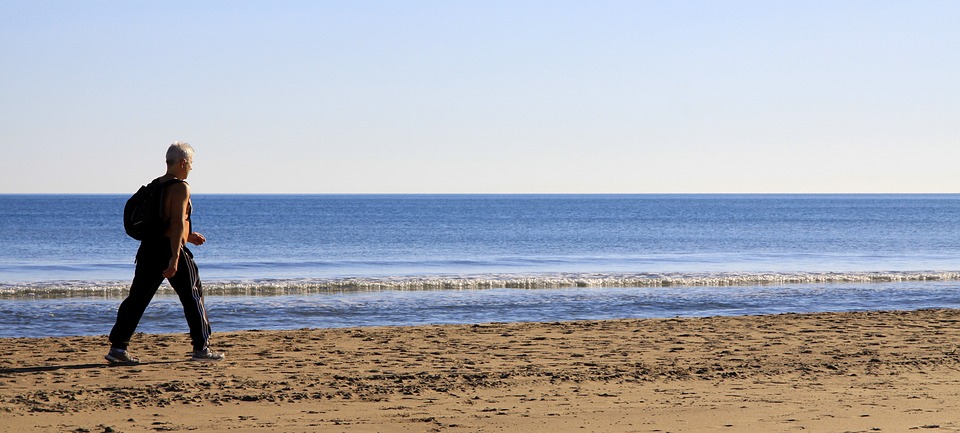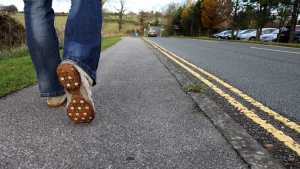
photo credit: pixabay.com/Google Creative Commons
When you’re preparing for a race, most people’s first goal is being able to run the whole distance without stopping. When you’re doing track work, people look at you with an evil or confused eye when you walk on the track. Well… let me tell you a secret: I have walked during every event that I’ve done since November of last year. As you might know, I usually finish quite near the top of the heap, if not on the top. So how can I possibly do that while walking? First, I’ll explain when to walk, and then I’ll explain how.
When to walk
The first important caveat to walking during events is that I run endurance events usually over marathon distance plus obstacles. In endurance events, you want to pace yourself so that you are working just as hard throughout the whole event. For every 1-second you run too fast on the first mile, you lose at least 5 seconds on the last mile. Unless you’re an elite racer (and even if you are), there are certain times that walking is the best decision.
Because of the energy it takes to levitate while running, and how you lift your knees higher during running, running burns almost twice as many calories per mile as walking. However, running can be made harder by other challenges we regularly see in OCRs. The advice that I’ve seen is that if you’re going slower than a 12-minute mile, you should be walking (see Runner’s World Run vs Walk 2005). It’s really hard to walk faster than that, and it’s really hard to run slower than that. Here are two situations when running may not the optimal solution:
Up hills
We can learn about running uphill by looking at handy charts for incline treadmills like this one (Nicholson Treadmill Chart). If you’ve got one of those monster hills that we have become very familiar with in an OCR, it likely is more than 15% grade. A 15% grade is defined by for every 100 ft you go forward; you must go 15ft up unless you’re magically digging a tunnel as you run. You’ll notice that running 12-minutes-per-mile up a 15% grade is equivalent to running 7:14 per mile on flat land. That means that unless you run your race faster than 7:14 for every mile, you probably should walk up that hill.
However, not every hill is steep enough to warrant walking. It depends on the pace that you’re running and how close you are to the magical 12-minute mile point. From experience, you should learn to sense how steep a hill is, and feel your legs and heart pounding. If you feel like you’re working too hard, you probably should be walking. If you feel like you’re slacking, you probably are and should keep on trucking up the hill.
Weighted Carries
The work that you put in to move yourself is defined in physics as the Force required to move times the distance moved. The force required to move an object is proportional to its weight (see Runner’s World Run vs Walk 2012). Let’s do a quick experiment playing with this calculator (Runner's World Calculator) that figures out calories burned when running one mile for a given weight at 10 minute miles (fun fact: the pace doesn’t actually matter):
160 lbs: 121 calories
170 lbs: 129 calories
180 lbs: 136 calories
190 lbs: 144 calories
200 lbs: 151 calories
210 lbs: 159 calories
If you’re a 160 lbs person carrying a 50 lb sandbag, then you’re burning 31% more calories to cover the same distance. If you’d like to keep the same calories per hour pace, then you need to slow your pace down by 31%. If you usually run an 8-minute mile on course, then 31% slower is an 11:30-minute mile. That’s suspiciously close to the you-should-be-walking pace.
The other reason for walking during weighted carries is your joints and your back. If you talk to anyone in the military or GORUCK, you’ll hear about the knee problems that people get from wearing heavy packs for long periods of time and running with them. As you get heavier, your joints are going to take more of a beating. The sudden jumping and jostling around that occurs during running takes significantly more effort than the relatively smooth motion of walking. So unless you’re making significant cash from running, walking under weight could be better for your overall longevity.
How to Walk

Google Creative Commons
The simple way to phrase this is “walk with purpose.” Walking is not a complete rest. In fact, it’s not a rest. You should spend as much effort walking as you do running. On a flat surface, I walk around a 13-minute mile, which corresponds to 20 hour pace for a 100 miler, an impressive time in itself. The key to accomplishing this is looking forward and keeping your feet churning. Your goal is to minimize the amount of time your feet spend on the ground. Don’t worry too much about the length of your stride, because stretching too far will make you do a semi-lunge that clearly takes more effort. Just put one foot comfortably in front of the other and shift your weight to your front foot right away. Your paces will be shorter than when you run, so you need to keep your foot speed up to hope to keep up your pace.
In addition to foot speed, think about your posture. If you lean back too much, all that weight is slowing you down instead of speeding you up. If you lean forward too much, you’re using your back muscles to pull yourself up constantly, which will eventually lead to back strain. Back strain is horrible! The correct form is to mostly be totally upright with a straight back and lean forward gently.
Dr Red Tights Sub-tip:
Integrate walking into your weekly work and your daily routines. If you’re walking alone or with fellow fitness enthusiasts, walk comfortably fast. If you don’t mind being socially awkward, you can always leave a group behind when they walk impressively slow when getting place to place. The more you make a 13-minute walking mile routine, the easier it will come to you during an event.
Also, don’t be afraid to integrate walking into your workouts. Whether it be active rest between intervals or a long slow hike, training those walking muscles is critical to success in endurance events.


Great read Wesley. I had previously been given the advice that if you’re going to walk, don’t walk up hill, as you’re still going to have to “work” and it kind of defeats the purpose of walking, which is to rest. Instead, run up the hill and then walk on the downhill portions, to enhance the “resting” period. I think I like the science behind your approach better, but curious about your thoughts on that?
I can only speak from my experience, and from watching Wesley run, but downhill is where gravity is going your work for you. As long as you can keep putting one foot in front of the other on the downhill, all you need to do is not fall over. I can still feel reasonably relaxed while running downhill faster than on flat ground as long as I make gravity my main source of motion.
@Matt: During a race, I don’t view the purpose of walking as rest. I view it as a way to maintain the same intensity despite the terrain and obstacles. I think running up the hill and walking the downhill leads to burning more energy and getting less out of it. The amount of energy it takes to go 5s/mile faster uphill is much more than the energy it takes to go 5s/mile faster downhill. If you’re looking to maximize speed for effort, I’d say walk the uphill and enjoy the downhill safely. However, if you’re looking for training your incline work, then running the hill and walking the down is a good strategy, but outside of training I don’t think it’s an efficient strategy.
@Wesley: That makes sense to me, thanks for the extra insight! Besides, I have to admit that walking downhill just never felt right to me anyway. Kind of like taking the stairs up, and the elevator down, lol!